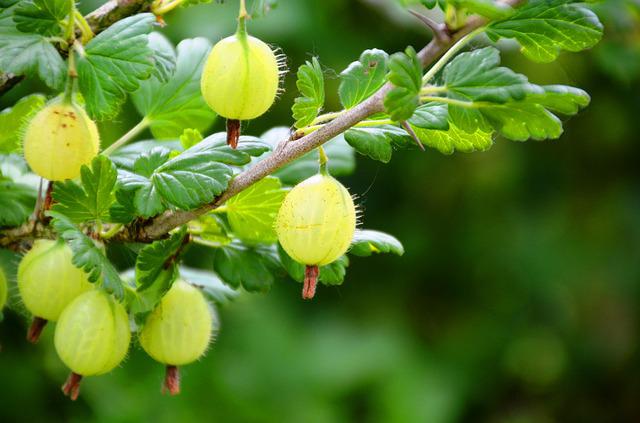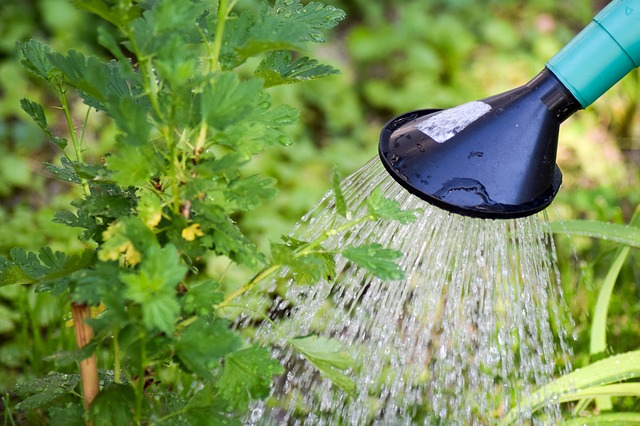Where Do Gooseberries Grow?

During the winter months, gooseberries can survive in USDA Hardiness Zones 3 to 5. In northern North America, native species can reach elevations of 10,000 feet, so they need some shade to perform well and may die if temperatures rise above 86°F (30°C). In hotter climates, mulch can help to reduce soil temperature fluctuations.
Gooseberries usually are thorny bushes that can produce fruit for 20 years. Home gardeners can train the plants to grow against walls, where they’ll take up less space. Hendry says that gooseberries should be planted in sunny spots and that the low maintenance needs of this hardy fruit make it especially appealing to home gardeners. Science Direct says that gooseberries are usually grown on large commercial plantations in Germany, Russia, Poland, and Scandinavia. However, gooseberries are often grown in the U.S. and Canada on smaller pick-your-own farms.
There are two main gooseberries: the European (Ribes grossularia var. uva-crispa) and the American gooseberries (Ribes hirtellum). They are hardy fruits that do well in cool, humid climates.
Regarding its legality, Gooseberries are not illegal in all countries, but they are banned in some states in the United States due to their potential to spread a disease called white pine blister rust, which can harm pine trees. The disease is not harmful to humans but threatens the timber industry. However, gooseberries are perfectly legal and enjoyed as a popular fruit in many other parts of the world.
Table of Contents
Planting Site Location
- Cool-summer climates are ideal for the growth of gooseberries.
- Gooseberries do best when planted in a location with lots of direct sunlight. Growing gooseberries in partial shade are ideal in hot climates. The berry yield will be reduced if grown in partial shade.
- Plant gooseberries in a shady area away from the direction of the prevailing wind. Avoid planting gooseberries in low areas susceptible to frost.
- Gooseberries do best in slightly acidic soil, ideally between a pH of 6.0 and 6.5. As long as the soil is not too alkaline, gooseberries can thrive.
- Avoid planting gooseberries in soil that is saturated.
- Gooseberries do best in well-drained soil, so amend planting areas with aged compost or commercial organic planting mix.
- White pine blight, which can infect gooseberries, has been linked to the gooseberry in the past. In the past, gooseberry planting was restricted in areas where white pines grow. Find out if gooseberries are commonly grown in your area by contacting your local Cooperative Extension Service.
Step-by-Step Instructions for Growing Gooseberries
- Grow gooseberries from their bare roots in the early spring or late fall, once the soil has warmed enough to work. It’s best to plant gooseberries in the early spring before they’ve had a chance to leaf out. Low temperatures won’t harm gooseberries.
- Container-grown gooseberries should be planted in the spring or summer to avoid the hot, dry weather that can harm the plants.
- Plant in a hole twice as wide and half as deep as the root ball. Roots should be spread out in a mound at the bottom of a hole, and the mound should slope away from the plant’s roots.
- Just below the nursery pot’s soil line, plant gooseberries. Fill in the hole with a mixture of native soil and composted or commercial organic planting mix, half of which should be aged compost. Tighten firmly so that no air pockets exist around the roots.
- Immediately after planting, remove all but the strongest 5 or 6 twigs.
- It’s best to use a liquid starter fertilizer with high phosphorus content for the new plant.
- As the plant grows, make sure the soil is kept evenly moist.
Spacing
- Allow 4 to 5 feet between each gooseberry bush.
- Five-foot spacing is recommended.
- Planting gooseberries as close as 2 feet apart is possible if trained to a stake or wire.
- A gooseberry plant can produce about 10 pounds of fruit per year.
Care Tips
Watering
You can stop watering the plant once it has grown fully. One inch of water per week or two in hot weather.

Fertilizing
Early spring fertilization with a balanced granular fertilizer is recommended for gooseberry plants. Too much nitrogen can cause mildew, so don’t overload the plant.
It’s important to give gooseberries regular potassium. From early spring until harvest, feed the plants once a month. Use a tomato-feed fertilizer or a liquid 5-10-10 fertilizer. Potassium-rich liquid tomato feed Pour potassium into the bush by using wood ash.
Mulching
Gooseberries thrive when organic mulch is applied around the plant’s root system. Good choices are compost or bark chips. Mulch helps conserve soil moisture, which is important for gooseberries.
Apply a 2-inch layer of organic matter around the plant in early spring. This reduces weed growth, retains water, and replenishes the soil’s nutrients.
Pruning
It is necessary to prune gooseberry bushes every year in late autumn/early winter. To avoid fungal infections, choose a dry day. Ideally, you want to prune new growth to two buds and main shoots (leaders).
The following year, prune new growth to five leaves in summer for a better harvest. Branches older than three or four years produce no berries. Those limbs must depart.
